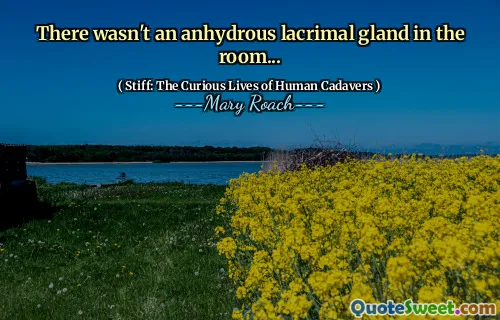Who's going to open the gates of heaven to some slob with his entrails all hanging out and dripping on the carpeting? From the sixteenth century up until the passage of the Anatomy Act, in 1836, the only cadavers legally available for dissection in Britain were those of executed murderers. For this reason, anatomists came to occupy the same terrain, in the public's mind, as executioners. Worse, even, for dissection was thought of, literally, as a punishment worse than death.
The passage highlights the public perception of anatomists and dissection in Britain prior to the Anatomy Act of 1836. For centuries, only the bodies of executed criminals were permitted for scientific examination, associating anatomists with executioners in the eyes of society. This relationship fostered a fear and loathing around dissection, which was viewed as a dreadful punishment rather than a scientific study.
Mary Roach's work in "Stiff: The Curious Lives of Human Cadavers" reflects on the stigma surrounding death and dissection, questioning the societal norms that led to such views. The quote emphasizes the grotesque image of a disheveled body being denied acceptance, illustrating the tension between the need for anatomical knowledge and the distaste for human remains.






